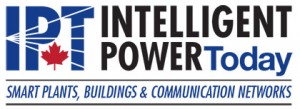Neutral Grounding Resistors (NGRs)
Solid-State Fault Current Limiters: A New Era in Fault Current Mitigation
Improving System Reliability with Neutral Grounding Resistors
Neutral Grounding Resistors (NGRs)
Balancing Cost and Performance in Neutral Grounding Resistor Selection
Neutral grounding resistors (NGRs) play a vital role in power grids by limiting fault currents during ground faults. These events can damage equipment and disrupt power delivery. While NGRs offer significant benefits, selecting the right NGR involves a careful consideration of cost-performance trade-offs. This article explores the key factors influencing the cost of NGRs and the implications for their performance and durability within the power grid.
Importance of NGRs in Overvoltage Protection
NGRs play a crucial role in limiting the fault current in an electrical system during a ground fault, thereby protecting equipment and ensuring system stability.
Protecting Electrical Equipment
By controlling the fault current level, NGRs prevent equipment damage due to excessive heating or mechanical stress caused by high fault currents.
Enhancing System Reliability
Properly selected and maintained NGRs contribute to the overall reliability of the power system by preventing catastrophic failures and minimizing downtime.
Cost Considerations in NGR Selection
While the primary function of NGRs is to ensure safety and reliability, cost is a significant factor in their selection process.
Initial Purchase Cost
The upfront cost of NGRs can vary widely based on specifications, materials, and manufacturer. While it might be tempting to opt for lower-cost options, this...
Related Articles
Improving System Reliability with Neutral Grounding Resistors
Power grid reliability is paramount for ensuring a consistent and secure supply of electricity. Ground faults, while relatively infrequent events, pose a significant threat to system stability. Neutral grounding resistors (NGRs) play a crucial role in mitigating the negative effects of ground...
Advancements in Neutral Grounding Resistor Design
Neutral grounding resistors (NGRs) are critical components in power grids, safeguarding equipment from damaging fault currents. While traditional NGRs have served their purpose reliably, advancements in design are leading to improved cooling systems and integrated monitoring capabilities. These...
Digital Simulation and Modeling in Neutral Grounding Resistor Systems
Neutral grounding resistors (NGRs) play a crucial role in power grids by limiting fault currents during ground faults. Selecting the right NGR requires careful consideration of various factors, as an improperly sized NGR can compromise both fault protection and system stability. Digital simulation...
Protecting Transformers and Generators with Neutral Grounding Resistors
Transformers and generators are the workhorses of the power grid, responsible for stepping up and down voltage levels and generating electricity, respectively. However, these critical pieces of equipment are susceptible to damage from high fault currents that can occur during ground faults. Neutral...
Improving System Reliability with Neutral Grounding Resistors
Power grid reliability is paramount for ensuring a consistent and secure supply of electricity. Ground faults, while relatively infrequent events, pose a significant threat to system stability. Neutral grounding resistors (NGRs) play a crucial role in mitigating the negative effects of ground...
Protecting Transformers and Generators with Neutral Grounding Resistors
Transformers and generators are the workhorses of the power grid, responsible for stepping up and down voltage levels and generating electricity, respectively. However, these critical pieces of equipment are susceptible to damage from high fault currents that can occur during ground faults. Neutral...
Digital Simulation and Modeling in Neutral Grounding Resistor Systems
Neutral grounding resistors (NGRs) play a crucial role in power grids by limiting fault currents during ground faults. Selecting the right NGR requires careful consideration of various factors, as an improperly sized NGR can compromise both fault protection and system stability. Digital simulation...
Solid-State Fault Current Limiters: A New Era in Fault Current Mitigation
Neutral grounding resistors (NGRs) have long been the mainstay for mitigating fault currents in power grids. However, advancements in solid-state technology are introducing new possibilities. Solid-State Fault Current Limiters (SSFCLs) are emerging as potential alternatives to NGRs, offering...
Advancements in Neutral Grounding Resistor Design
Neutral grounding resistors (NGRs) are critical components in power grids, safeguarding equipment from damaging fault currents. While traditional NGRs have served their purpose reliably, advancements in design are leading to improved cooling systems and integrated monitoring capabilities. These...
Balancing Cost and Performance in Neutral Grounding Resistor Selection
Neutral grounding resistors (NGRs) play a vital role in power grids by limiting fault currents during ground faults. These events can damage equipment and disrupt power delivery. While NGRs offer significant benefits, selecting the right NGR involves a careful consideration of cost-performance...
